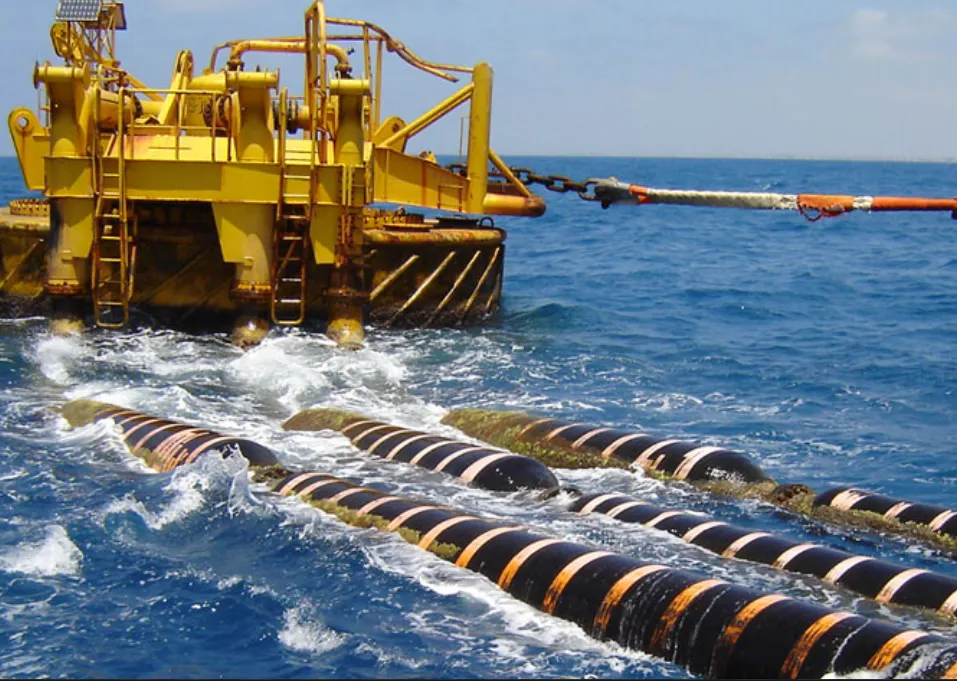 This piece is part of the series, India–Australia Partnership: The Defence Dimension
This piece is part of the series, India–Australia Partnership: The Defence Dimension
The protection of subsea infrastructure is a growing concern for countries in the currently fragile geopolitical milieu. Subsea cables are a crucial conduit of telecommunications that enable internet connectivity and support growing cyberinfrastructure by reducing latency and increasing bandwidth, a quality that satellites lack. However, recent disruptions either through sabotage, espionage, manipulation, or sheer accident highlight the issue of subsea infrastructure protection. In sum, submarine cables form a part of India’s critical infrastructure that require legislative and physical protection in the Indian Ocean region.
Submarine cables are the foundation of the country’s flagship vision
, Digital India 2015, which aims to digitally empower society and governance of the country. India is emerging as a
crucial hub for submarine cable infrastructure. Currently, India has
17 submarine cables landing from different parts of the world. However, India currently lacks
jurisdictional, legislative, and physical protection measures for these expensive and vulnerable underwater assets.
Australia is one of the few nations with a dedicated regime as well as declared zones for the protection of undersea cables. Australia’s world-leading legislation provides a template for creating cable protection zones under India’s domestic legislation in its Indian Ocean waters.
However, Australia is one of the few nations with a dedicated regime as well as declared zones for the protection of undersea cables. Australia’s world-leading legislation provides a template for creating cable protection zones under India’s domestic legislation in its Indian Ocean waters.
Australia’s ‘Cable Protection Zone regime’: A success story
Australia has established ‘Cable Protection Zones’ within its Exclusive Economic Zone (EEZ—extending up to 200 nautical miles from the baseline) utilising the legislative space provided by the United Nations Convention on the Law of the Sea (UNCLOS). Cable Protection Zones were established by the Howard government in 2005 for the protection of international submarine cables under Schedule 3A of the Telecommunications Act namely—the
Telecommunications and Other Legislation Amendment (Protection of Submarine Cables and Other Measures) Act 2005 and the
Telecommunications Legislation Amendment (Submarine Cable Protection) Act 2014. Australia’s domestic protection regimes allow the industry regulator, the Australian Communications and Media Authority (ACMA), to safeguard its international submarine cables landing in Australia.
Under the regime, ACMA declared three
protection zones in 2007: Northern Sydney, Southern Sydney, and Perth. Under this legislation, Australia prohibits and restricts activities such as sea bed trawling, sand mining, vessel anchoring, dredging, and activities that involve a serious risk to the seabed in the restricted/protected zones. The establishment of these zones further prohibits certain kinds of fishing and shipping vessels in their jurisdictional waters. It also requires an ACMA permit for telecommunication carriers before installing submarine cables in Australian waters.
Replicating similar zones in Indian waters and beyond
India can work with its Australian counterparts to adopt similar laws in India. It can legislate over submarine cables within the 12 nm territorial zone. India can further use its sovereign rights over submarine cables within the EEZ to establish ‘Submarine Cable Protection Zones’ via a domestic legislative framework. The creation of a Submarine Cable Protection Zone within India’s Exclusive Economic Zone is consistent with the international maritime laws, provided under UNCLOS.
India can work with its Australian counterparts to adopt similar laws in India. It can legislate over submarine cables within the 12 nm territorial zone.
Such zones can be decided either based on the density of the cables or by calculating vulnerability factors in Indian waters. A solid legislative framework would enable India to use its maritime law enforcement within these zones, as well as jurisdictional capacities for the arrest and prosecution of wrongdoers.
In terms of physical protection, the repair of damaged cables is an expensive and skilled task. The Indian Ocean has a unique yet challenging maritime geography due to factors such as bathymetry, salinity, and temperature of its waters, which renders it difficult for any single Indian Ocean Region (IOR) littoral to protect its interests and assets unilaterally, more so in the subsea/underwater domain. IOR littorals largely comprise underdeveloped and developing nations; therefore, they lack the national capacity and capability to safeguard respective assets in these waters.
The rather difficult task of monitoring and protecting submarine assets in the IOR not only requires technical expertise but also a policy framework to ensure physical safeguards are backed up by legislation.
Taking the idea of establishing cable protection zones a step further, Australia’s model legislation could also be adopted throughout the IOR. This initiative could be pursued through the Indian Ocean Rim Association, where India and Australia could spearhead the issue. Such legislation would mean that these Indian Ocean littoral nations will be able to satisfy their UNCLOS obligation to protect cables. Furthermore, being an issue of sovereign rights, the protection of submarine cables has been included in the agenda of the Quad, providing the issue with the required political support.
Operationally, this agenda could allow national agencies, such as the navies of the Quad and like-minded countries in the IOR, to coordinate their work in monitoring high-density cable zones or routes. Based upon respective assets and jurisdictional purviews, the navies and coastguards of India and Australia could provide support in the protection of regional subsea cables. The jurisdictional and operational nuances could be worked out once domestic legislative frameworks for the protection of subsea infrastructure are in force. This initiative would be a practical and effective way to reduce submarine cable damage and sabotage in the Indian Ocean Region, whether accidentally by vessels or purposefully by antagonistic actors.
Pooja Bhatt is a researcher in maritime security and governance issues based in New Delhi. Currently, she is a Consultant at the Ministry of External Affairs, India.
This article was written as part of the Australia India Institute’s defence program undertaken with the support of the Australian Department of Defence.
The views expressed above belong to the author(s). ORF research and analyses now available on Telegram! Click here to access our curated content — blogs, longforms and interviews.




 PREV
PREV


